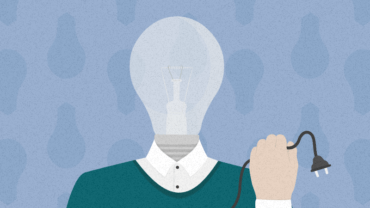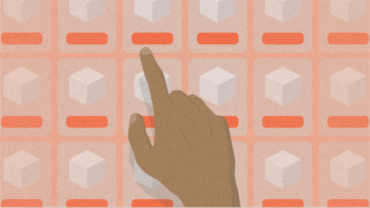Help People Feel Good About the Decisions They’ve Already Made

The role of marketing doesn’t end the moment a customer buys something. Helping customers feel good about their purchases is just as important. Only then will they start talking about your brand and keep coming back for more.
In this article, you’ll learn:
- Why marketing shouldn’t just focus on influencing people’s choices “pre-decision” but also on helping them feel good about their choices “post-decision”;
- How the brain seeks information to support our choices after we’ve made them; and
- How closure can help people feel better about their choices.
In a recent piece on InsideBE, we demonstrated how creating decision confidence amongst the people you want to choose your product or service should play a critical role in your marketing strategy. In that article, we discussed the importance of going beyond influencing choices and additionally helping your prospective customers feel good about the process of choosing something.
In this article, we’ll take a look at one of the great win-wins in the business world. When a customer feels good about the choice they’ve made, it’s a win for the business or brand that has been chosen and a win for the chooser as well. And what’s perhaps surprising is the lengths your customers will go to feed the need to feel good about the choices they’ve made.

Discover ground-breaking ideas and fascinating solutions.
A study conducted by the Georgetown Institute for Consumer Research in 2014 found that 78% of consumers sought out information about their brand or product after making a purchase (including information from product packaging and product manuals). Furthermore, 47% of consumers sought out information from sources other than the product packaging or manual, such as ads, online information from third parties, or online information from the original brand.
When a customer feels good about the choice they’ve made, it’s a win for the business or brand that has been chosen and a win for the chooser as well.
Out of those searching for more information, 67% agreed with the statement that they were looking to reaffirm their purchase decision. Additionally, 88% agreed with the statement that they wanted to learn more about the product, and 65% wanted to learn more about the brand. Rationally, this makes little sense: Why invest further attention in a decision that you’ve already made?
As marketers, we might think this is simply a conscious affirmation of the purchase decision. However, findings from neuroeconomics and behavioral psychology suggest that this behavior could be the result of some powerful instinctual mechanisms. Research suggests our brains are selectively tuned into information that reinforces decisions we’ve already made.
Essentially, anything that makes us feel good about a choice, whether that choice be the new phone we just bought or our favorite brand of coffee that we’ve been starting our day with for the past several years, doesn’t just make us feel good about our decisions but also makes us feel good about ourselves.
People Like Confirmation!
After we make a decision, a phenomenon called confirmation bias will often come into play. Confirmation bias is our tendency to selectively seek information that supports our decisions.
Uncertainty
Uncertainty is a situation when your customer has incomplete or missing information. A situation when their questions, concerns, and fears aren’t answered.
We discount all but the most overwhelming suggestions that we’ve made the wrong choice, and, importantly, we inflate evidence and memories that support our choice. The “confirmation” we find helps reduce decision uncertainty, but it also helps us feel good about our choices, about the views we hold, and, above all, about ourselves.
The confirmation bias is at play even when we’re seeking advice. This may seem a little odd because the rational utility of advice is to give us a perspective other than our own. But oftentimes it seems that another perspective isn’t what we actually want from those advising us.
Confirmation bias is our tendency to selectively seek information that supports our decisions.
Researchers at SWPS University, Wroclaw looked at how people rated a financial advisor on the quality of their advice across several scenarios. The researchers’ findings were that when a financial advisor’s recommendation was in line with the previously held views of the client, the client rated the advisor more highly.
Sharing is Caring
Traditionally, marketing has focused directly on influencing an initial decision. But in a world where the opinions of “others” are the greatest influence, investing a little more time and effort in helping people who’ve already bought your brand feel good about their choice could bolster their instinct for spreading that feeling. And as we showed in an earlier piece, when people feel good about a product they’ve chosen, they’re more likely to tell people about it.
A good choice can become an even better choice
Research conducted by scientists at University College London showed that the more we think about a good choice, the better that choice becomes to us. In an experiment that monitored brain activity in research participants while they imagined taking a holiday, participants were asked to think about spending next year’s vacation in 80 different destinations. They then rated, on a scale of 1-5, how happy they would be to vacation at each of the 80 locations.
Activity in the caudate nucleus, which is a brain area thought to be important for anticipating rewards and for learning, was tracked as they rated each destination.
In a second brain scan, participants were shown two options they had rated similarly (perhaps they had rated both Thailand and Greece similarly on a scale from 1 to 5 – both great places to spend vacation). They were then asked to imagine vacationing in these two locations they had rated equally.
When asked to choose between the two options, people chose the destination that most activated the caudate nucleus in the earlier scan. In fact, activity in the caudate predicted which destination would eventually be chosen from a selection of similarly rated alternatives.
After making their choice, participants were once again asked to rate the two destinations (remember – they had rated both equally in the previous round). If Thailand was chosen over Greece, it was subsequently rated even higher while Greece was rated lower. And activity in the caudate measured by the brain scan during the reevaluation showed that activity increased for Thailand and decreased for Greece.
University College London professor Tali Sharot, who led the study, said: “Re-evaluating our options post-choice may serve an adaptive purpose by increasing an individual’s commitment to the action taken.”
The lesson for marketers here is simple: find ways to remind people who’ve chosen your product that they’ve made a good choice. Encourage them to let others know – not because they’re helping you by recommending your product, but because they have bragging rights as great choosers!
Re-evaluating our options post-choice may serve an adaptive purpose by increasing an individual’s commitment to the action taken.
Choices aren’t just decisions, they’re also a way we communicate to others – they’re like badges of our values and accomplishments. And we tell people about choices we feel good about not so much because we want to help others make good choices but because we want people to think we’re discerning and smart.
Provide closure post-decision
Researchers from London Business School have studied how seeking and avoiding closure affects how people feel about their choices. In one of their experiments, the researchers asked participants to choose from a selection of 24 chocolates in a glass cake dome. In one condition, they asked participants to take a chocolate and try it.
In the second condition, they were told to place the transparent dome back on the selection before tasting the chocolate. When asked about their satisfaction with the chocolate they had chosen, those who had replaced the cover on the selection indicated higher levels of satisfaction than those who had not replaced the cover and, thus, had not created physical closure on their choice. Those who covered the selection were also less likely to think about the chocolates they hadn’t chosen, reducing potential regret.
One insight they offer is important for marketers contemplating how they might facilitate choice closure. The act of closure must be performed by the decision maker rather than by someone else.
The act of closure must be performed by the decision maker rather than by someone else.
Simona Botti, who led the study, suggests ways of helping choosers bring closure to their choices by:
- designing spaces or procedures to facilitate choice closure; for example, by positioning sales tills at a distance from displays;
- requiring website customers to cancel items they’ve considered but rejected.
A great example that demonstrates both choice supportive biases and closure was used by the US casual wear retailer Old Navy. They put stickers above the three hooks in their changing rooms. The sticker above the hook on the right says “Not For Me” while the stickers above the middle hook and the left hook say “Love It!”
This is a brilliant and simple idea that makes the process of choice easy. In addition, giving shoppers the opportunity to put something they like on a “Love It!” hook is pure genius, as it makes the shopper positively reinforce choices that they already feel good about. And having someone put an item on a hook that says “Love It!” might be as close as you can get to closure for any decision.

Source: Ronn Torossian Update
Key Takeaways
- It’s not about your brand, but the chooser’s decision to choose it. Our choices can make us feel very good or very bad. When someone feels good about choosing your brand, it’s not so much your brand that triggers the feeling as it is their choice.
- Confirmation bias and choice affirmative bias make us feel good about choices we’ve made. Our brain doesn’t want us dithering over choices – it wants us to either stick to something or switch it up and will do what it can to make us feel good about whatever we choose.
- If we can encourage people to think about a good choice, then there’s every chance that they’ll start thinking of it as an even better choice!
- Helping create a sense of closure can help increase choice satisfaction and minimize regret or buyer’s remorse.
- Don’t think of marketing as being just about influencing decisions. How can you make people feel good about their choices? When they do, they’re more likely to get more out of the product, to buy it again, and to tell other people about it. Remember, though they aren’t really telling others about your brand, they’re really telling them about their great choice.






